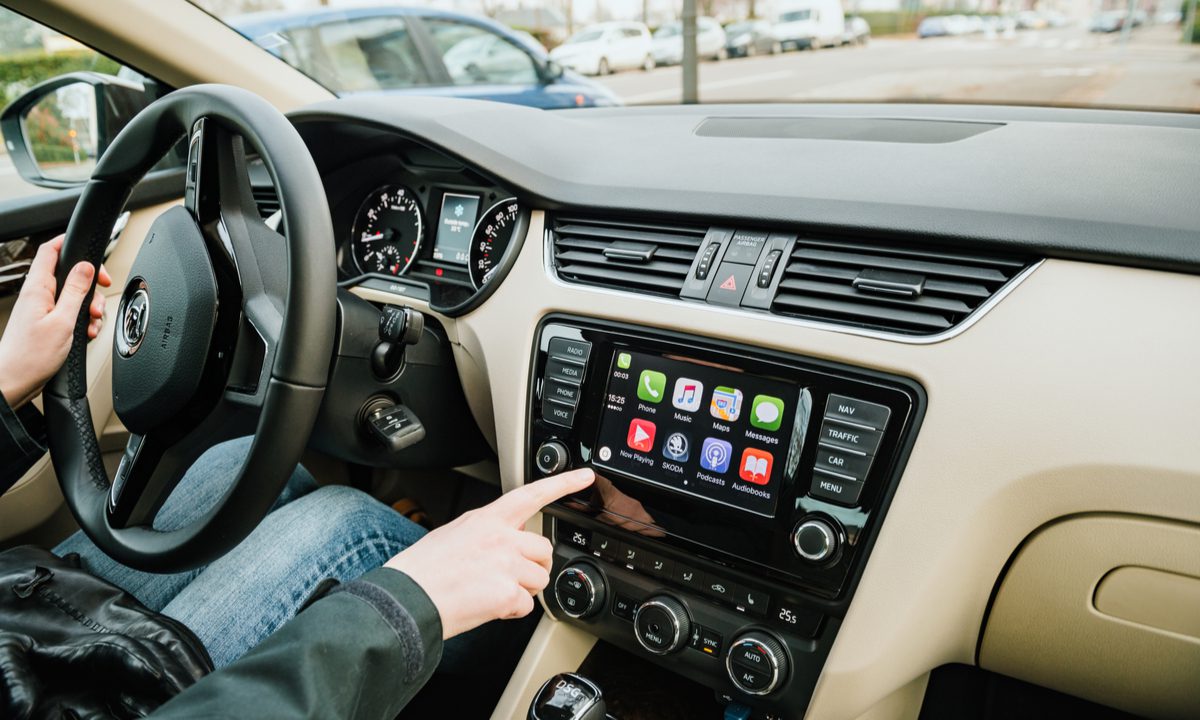Apple Adds Functionality to Its Vehicle Dashboard App

The trend of cars becoming more like smartphones has taken another step with Apple’s announcement that the next generation of CarPlay will fill more screens and perform more functions in vehicles.
With this product, the driver’s iPhone will be able to communicate with the vehicle’s real-time systems and display on the instrument cluster driving information such as speed, revolutions per minute (RPM), fuel level and temperature, Apple announced Monday (June 8) during the keynote at its Worldwide Developers Conference (WWDC).
“We’ve been working with automakers to reinvent the in-car experience across all of the driver’s screens,” Emily Schubert, senior manager of car experience engineering at Apple, said during the event.
The new CarPlay will accommodate screens of different shapes and sizes and will enable drivers to choose from instrument cluster options with different designs, colors, backgrounds and layouts.
“Cars have changed a lot, with larger-sized screens and more of them throughout the car,” Schubert said. “There’s an opportunity for iPhone to play an even more important role.”
Offering Drivers a Familiar User Interface
In addition to delivering a unified and consistent experience on the screens of both the vehicle and the driver’s iPhone, the next CarPlay will allow the user to control such equipment as the car’s radio, air conditioning and seat heaters.
It will also include widgets that will be powered by the iPhone and appear on the car’s screens, providing the driver with more information at a glance. These widgets can display such information as the user’s calendar, smart home status and local air quality.
Vehicles equipped with this next-generation CarPlay are to begin to be announced late in 2023. A slide shown during the presentation included the logos of 14 automotive brands, including Ford, Honda, Mercedes-Benz, Nissan and Porsche. CarPlay is currently available on 98% of cars in the U.S.
“Our users love CarPlay,” Schubert said. “It gives them an easy way to use apps in the car, using the familiar [user interface] from their iPhone.”
Displaying Content From Connected Services
Google, too, is offering an operating system designed for use in automobiles. For example, Volvo announced May 4 that all new model-year 2023 Volvo vehicles will include an infotainment system that has Google built into it and gives drivers access to the Google ecosystem throughout the car.
Read more: Over-the-Air Updates Add Functions to Millions of Vehicles
This technology will also enable the vehicles to receive over-the-air software updates so they can be kept current — much like a smartphone.
“As software updates are rolled out, each 2023 Volvo car is expected to continue to improve over its lifetime,” Volvo wrote in a press release.
An executive at digital cockpit component producer Visteon said April 28 that there’s an automotive industry-wide trend toward larger displays with smartphone-like designs that are better able to display content from connected services.
See more: Automakers Are Deploying More, Bigger, Better Digital Displays
“Display trends driven by consumer electronics products such as smartphones and tablets have shaped some of the trends in cockpit displays, including narrow borders and high perceptual quality,” Visteon President and CEO Sachin Lawande said during the company’s quarterly earnings call.
